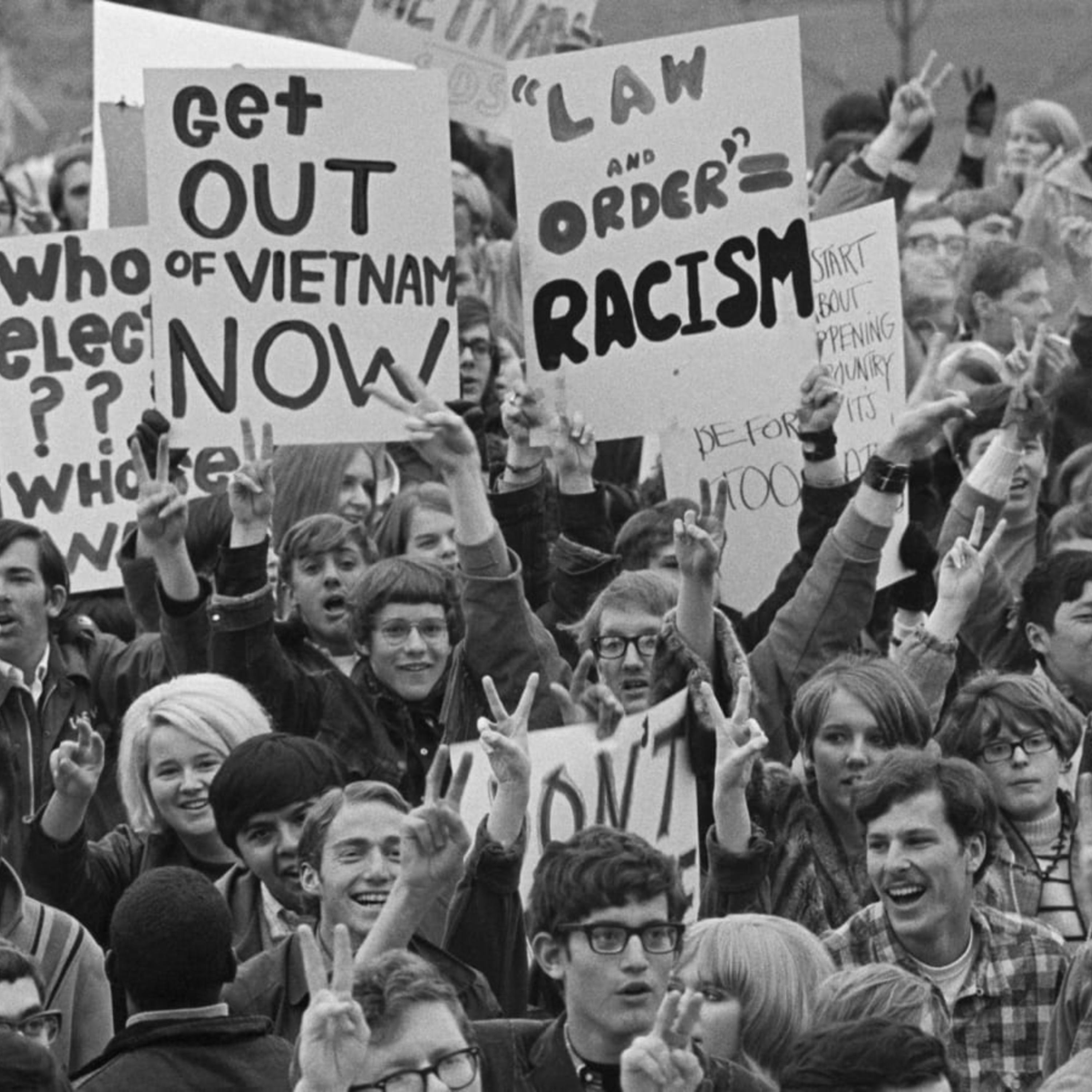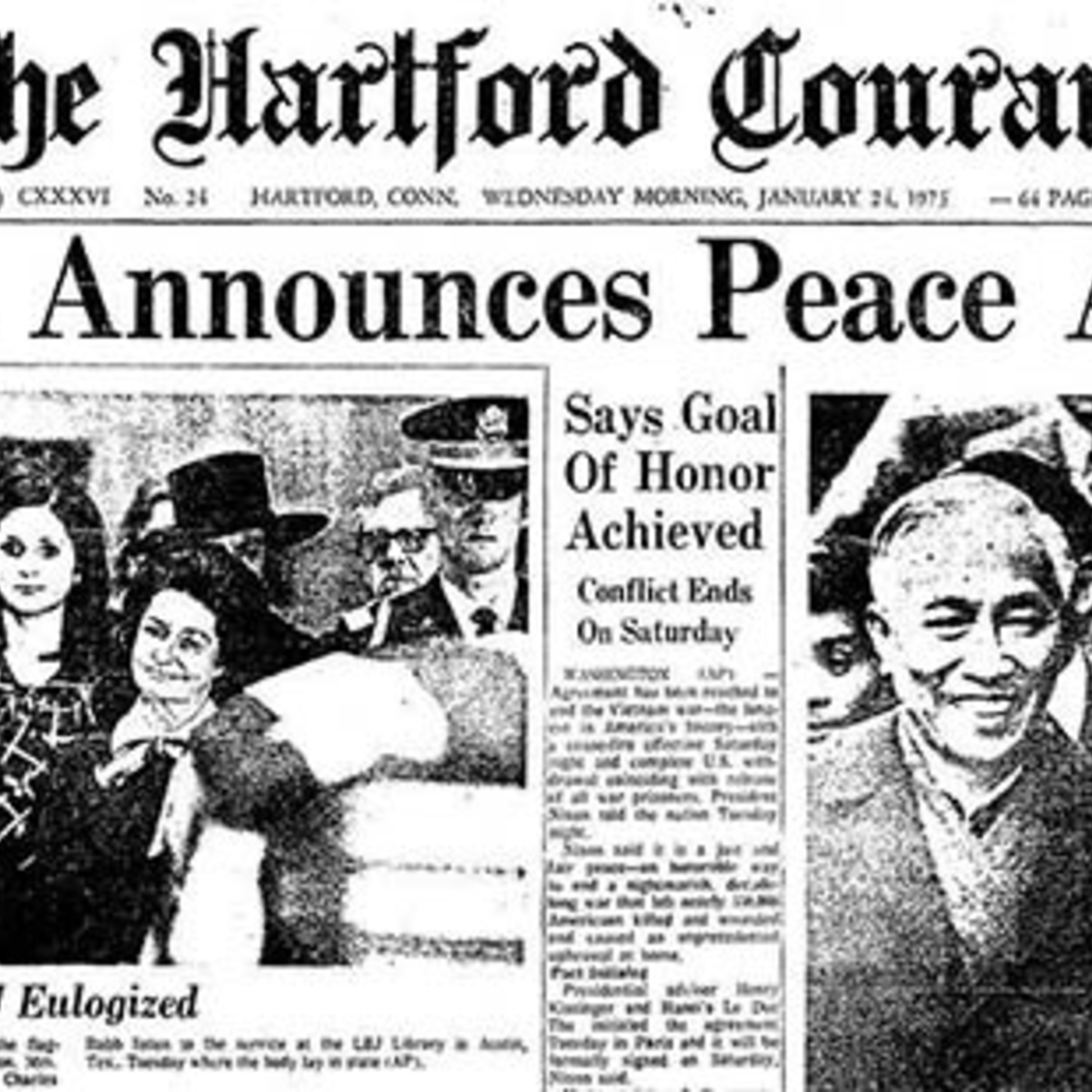Richard Nixon: Struggle and Vietnamization
The infamous President Nixon. Much can be said about his presidency and its ignominious conclusion. However, since this exhibit is solely focusing on each president’s contribution to the situation in Vietnam leading up to and during the Vietnam War, we will only examine his actions in that sphere, of which there is a lot to explore. Nixon himself valued foreign policy over every other aspect of the office throughout his time in office, so how did he do in Vietnam? The question is a tricky one to answer, as Nixon’s strategy in Vietnam shifted multiple times over the course of his presidency, with each strategy carrying varying levels of success.
Nixon inherited the culmination of every mistake his predecessors made. He was certainly fighting an uphill battle in Vietnam, and the war effort was not finding success abroad and at home; domestic uproar over the war was becoming more and more commonplace. Nixon’s initial goal was to snatch victory from the jaws of defeat and end the costly Vietnam War on favorable terms for the U.S. As part of this initial goal, in 1969 Nixon secretly put in place Operation Menu, the bombing of Cambodian and Vietnamese supply lines in order to put pressure on North Vietnam to conclude the war on the U.S.’s terms. Hasty decisions like this from Nixon played into the intentional persona Nixon was attempting to create of a “mad-man” willing to act irrationally to end the war. Nixon’s hope was that by playing up this unpredictable persona, he could scare the North Vietnamese into submission; this did not work. As the North Vietnamese did not balk at Nixon’s attempts to secure any semblance of U.S. victory from the war in Vietnam, and as discontent with the war domestically continued to rise, Nixon shifted his Vietnam strategy.
Starting in 1970, Nixon began to implement the war strategy of Vietnamization, which was the strategic withdrawal of U.S. troops from Vietnam in order to instead place the burden of the conflict on the South Vietnamese. This strategy from Nixon marked the beginning of the end of a long and arduous fight by American troops in Vietnam. With the implementation of Vietnamization, one can see the wavering of U.S. commitment to sustaining war in Vietnam; American withdrawal from Vietnam finally started to gain momentum. Ultimately, on January 23rd, 1973, the Paris Peace Accords were signed and the U.S. fully withdrew grounded military forces from Vietnam; it was not until 1975 that the conflict in Vietnam would officially end.
Nixon leaves behind a tattered and complicated legacy, and his dealings with Vietnam are no exception. However, it is important to keep in mind the horrific situation in Vietnam he inherited from those who came before him; Nixon, in many ways, was given by his predecessors a losing battle to fight. With that in mind, he did work hard to realize an end to U.S. military involvement in Vietnam, and Vietnamization helped achieve this goal. However, his initial “mad-man” policy bore no fruits early in his term as president, causing more harm and destruction than good. In that way, Nixon and his actions in Vietnam accurately characterize the conflict in Vietnam as a whole: messy, complicated, and leaving behind a difficult-to-contend-with legacy.
Digital Media/Primary Sources
Below are two cardinal moments regarding Vietnam from Nixon's presidency. The first video is a televised address from the president in which he fairly candidly explains the situation in Vietnam, making it a point to discern the role his predecessors had in creating the troublesome situation there; the second video is Nixon's announcement to the American people of the signing of the Paris Peace Accords, officially removing U.S. military forces from Vietnam.




